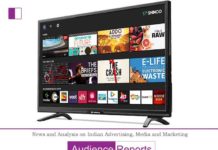Lara Brownlow, Head of Channel Sales APAC, and Gil Burgmans, Senior Partnerships Lead, LinkedIn spoke on why the platform offers ABM services and what it does for brands and marketers
Account Based Marketing (ABM) is a B2B strategy in which sales and marketing efforts are focused on high-value target accounts. Unlike a broad marketing campaign that reaches a mass audience hoping to make a connection, ABM identifies key targets and markets custom campaigns against a very narrow list.
We learnt all this and more during a conversation with Lara Brownlow, Head of Channel Sales APAC and Gil Burgmans, Senior Partnerships Lead, LinkedIn. They spoke about how leading brands are leveraging ABM, how different are LinkedIn ads from Facebook ads, what specifically LinkedIn focuses on, why advertising on LinkedIn is expensive compared to other platforms, and how ABM benefits brand marketing.
“Account Based Marketing helps in shifting from traditional B2C to B2B marketing. Moreover, it makes us understand the right audience when we are selling the products to companies rather than to buyers. Briefly, ABM involves a process in which we target different companies at different stages to understand and cater to the wider demands of the company,” Burgman said.
Focusing on how brands are leveraging ABM in connecting marketers with sales, Brownlow said, “Our larger portion of customers is B2B and we are working with a lot of companies across tech, finance, and many other verticals. If we deep dive into the data, we find how Adobe reframed a lot of their marketing approach to have ABM strategy with dedicated kinds of processes and brought their sales team and marketing teams to have much tighter collaboration. Across the board, we’ve got customers starting on their ABM approach and then we’ve got some of our largest global technology companies that are much more sophisticated and further on in that journey.”
Elaborating on the results brands are getting after implementing the ABM model, Burgman said, “We see tons of brands on LinkedIn having an incredible engagement on their pages and they are freely sharing the content related to their companies and employees.”
Asking how LinkedIn uses the ABM model, Brownlow said, “ABM is something that has been around for a long time, but the advancements in technology and our marketing technology partners that are coming on board now to offer better functionality around measurement, around campaign set up and experimentation and implementation, that’s advancing. Moreover, in today’s current economic climate, the return on investment is being scrutinized more than ever and we know that a focused approach on the highest valued accounts is always going to be something that is the core to a marketing strategy in these tougher times.”
Talking about how ads go on LinkedIn, Burgmans said, “Unequivocally, LinkedIn provides a professional platform for an individual to gratify their professional needs. It is an environment where we try to create economic opportunities for brands, businesses, job creators, and job seekers. The professionals come on LinkedIn to build connections and to learn more in their respective fields. Moreover, it is a great learning hub both for job seekers and companies. Companies willingly invest on LinkedIn because they are aware of the ROI they get from the ad spends.”
On why advertising on LinkedIn is expensive compared to other platforms, Burgmans said, “The ROI of ad spend is much higher on LinkedIn and that’s why the ad spend on LinkedIn is expensive as compared to other media platforms. By judging it on the face value that the brand puts in place, attribution putting in place, the whole ecosystem of partners, connecting your CRM system, connecting your sales teams to it, you can see that it drives a ton of value for the cost that you’re paying.”
Brownlow also discussed what differentiates LinkedIn from other platforms. “I have been at LinkedIn for 10 years and certainly, when I joined the business a long time ago, people still thought of LinkedIn as a kind of a static, digital resume and it was sort of more of a recruitment kind of site. Where we are today, it is much more of a professional network. It’s where business and mostly business is done and that’s going to continue to evolve over the next period. We don’t even really consider ourselves a social network. We’re a business platform and we’ve seen a lot of advances. We will continue to see a lot of advancements in our marketing products and our solutions for customers with sales and marketing alignment and the work that we do with Sales Navigator and partners is a big part of that.”




































